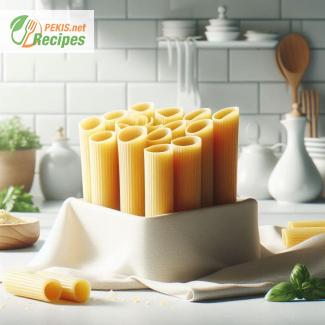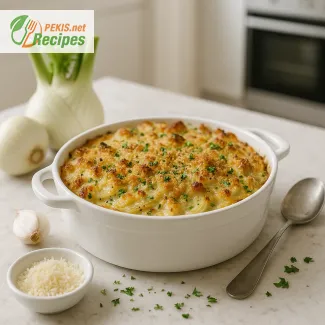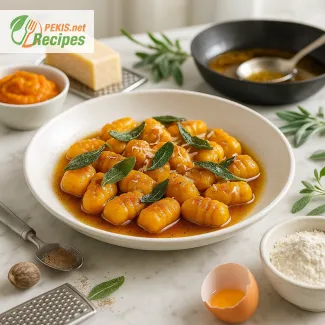
Cannelloni, the hollow, cylindrical pasta, is a symbol of Italian culinary tradition, often associated with rich, savory fillings like cheese, meat, or vegetables. But when served without filling, cannelloni reveals the true beauty of the pasta itself—its smooth, delicate texture and its ability to capture the essence of simplicity. "Cannelloni pasta only, no filling" might sound minimalistic, but this dish is a celebration of the pasta's integrity, the craftsmanship of dough-making, and the art of combining simple, quality ingredients.
In its purest form, cannelloni without filling is all about highlighting the texture and flavor of the pasta. It's the perfect canvas for sauces and accompaniments that can turn this simple dish into an extraordinary gastronomic experience. With its tubular shape, cannelloni acts as a vessel, soaking up the flavors of any sauce or garnish with which it is paired. Whether it’s a light drizzle of extra virgin olive oil, a creamy béchamel sauce, or a rich tomato and basil combination, the possibilities are endless.
This dish is ideal for those who appreciate the subtleties of handmade pasta. Each bite delivers a gentle chew, perfectly al dente, allowing the palate to enjoy the delicate flavors of high-quality flour, eggs, and just a hint of salt. The smoothness of the pasta is complemented by its ability to hold sauces in its crevices, turning every mouthful into a balanced experience of flavor and texture.
Cannelloni pasta without filling offers versatility—allowing home cooks to experiment with various sauces, or to enjoy it with just a sprinkle of Parmesan and a touch of butter. It serves as an elegant side dish to more complex entrees, or as a light, standalone meal when accompanied by a simple salad or sautéed vegetables. In any case, the dish exemplifies the charm of Italian cooking, where simplicity is often the key to an unforgettable dining experience.
While some might overlook pasta without filling, it’s a testament to the quality of the ingredients used. Handmade or fresh cannelloni shines in this minimalist preparation, offering a blank canvas for culinary exploration. This is the kind of dish that invites experimentation, from layering with cheese to serving with herb-infused oils, yet retains its rustic, traditional roots.
- Prepare the dough: On a clean work surface, sift the flour and make a well in the center. Crack the eggs into the well, add olive oil, and sprinkle a pinch of salt. Using a fork, gradually mix the eggs with the flour until a dough begins to form.
- Knead the dough: Once the dough is formed, knead it by hand for about 10 minutes, or until it becomes smooth and elastic. If the dough is too dry, add a few drops of water; if too sticky, add a bit more flour.
- Rest the dough: Wrap the dough in plastic wrap and let it rest at room temperature for at least 30 minutes. This helps the gluten to relax, making the dough easier to roll.
- Roll the dough: After resting, roll the dough into thin sheets, about 1 mm thick. Using a knife or a pasta cutter, cut the dough into rectangular pieces, roughly 10 cm x 12 cm.
- Cook the cannelloni: Bring a large pot of salted water to a boil. Cook the pasta sheets in batches for 2-3 minutes until al dente. Remove them with a slotted spoon and lay them flat on a clean kitchen towel to cool and dry slightly.
- Serve: The cooked cannelloni pasta is now ready to be paired with your favorite sauce or served simply with olive oil, butter, or Parmesan cheese.
How the Ingredients and Nutritional Values Affect Our Body and Health
The ingredients for this dish are simple yet essential components of a balanced diet. Let’s break down their impact on our health:
- Flour is a source of carbohydrates, which are the body’s primary energy source. The refined all-purpose flour used in this recipe provides a smooth texture to the pasta, but it is lower in fiber than whole wheat flour. However, this makes it easier to digest and gives the dish a light, delicate quality. While low in micronutrients, flour still provides some B-vitamins and iron.
- Eggs bring high-quality protein to the dish, essential for muscle repair and overall bodily functions. They also contribute fat-soluble vitamins like A, D, and E, as well as minerals like zinc and iron. Eggs also add richness and a velvety texture to the pasta dough.
- Olive oil is an excellent source of healthy fats, particularly monounsaturated fats, which are linked to improved heart health. Olive oil also contains antioxidants, which help to protect the body from oxidative stress.
- Salt is added in small amounts for flavor but also plays a role in balancing electrolytes in the body. While excessive salt intake can lead to health issues, the small amount used here is unlikely to have a negative impact.
Together, these ingredients form a dish that is light yet nourishing, providing energy, protein, and healthy fats. While the carbohydrates in the pasta offer a quick source of energy, the proteins and fats help sustain this energy over time, preventing spikes and crashes in blood sugar levels. For those looking to increase fiber intake, this dish could be paired with a side of vegetables or a salad.
How Often Should This Dish Be Included in Our Diet?
Cannelloni pasta, when enjoyed without filling, is a relatively light and versatile dish that can fit into a balanced diet. Like all pasta dishes, it’s best consumed in moderation, especially if refined flour is used. Including this dish once or twice a week as part of a varied meal plan, where it’s paired with nutrient-dense sauces or sides, can ensure that it contributes to overall nutrition without overwhelming the diet with carbohydrates.
For those seeking a more fiber-rich option, using whole wheat flour or serving it with fiber-rich vegetables can make the dish even healthier. Additionally, pairing this pasta with protein sources like lean meats, legumes, or dairy can enhance its nutritional profile, turning it into a more balanced meal.
General Advice: When making cannelloni pasta only, no filling, simplicity is key. The quality of the ingredients will make or break the dish, so it’s worth investing in high-quality flour, fresh eggs, and extra virgin olive oil. For a richer flavor profile, consider experimenting with flavored olive oils or incorporating fresh herbs like rosemary or thyme into the dough.
This dish can be an excellent option for entertaining guests or for a family meal that feels luxurious yet approachable. Whether served as a side dish or a main course, cannelloni pasta without filling invites creativity, while maintaining the essence of traditional Italian cuisine.





